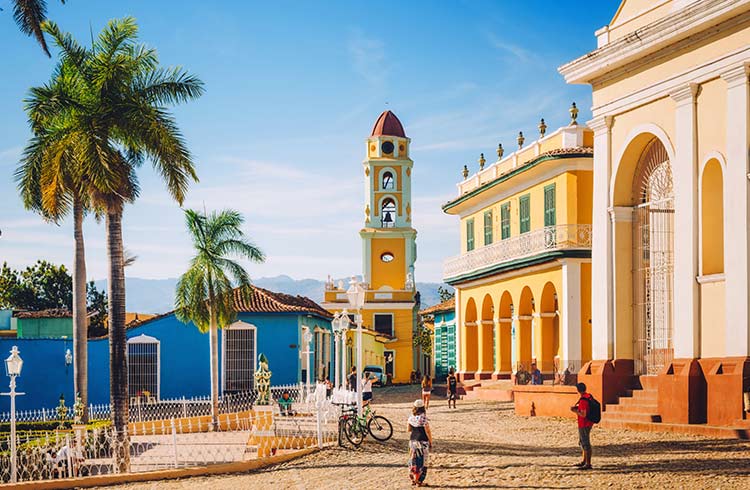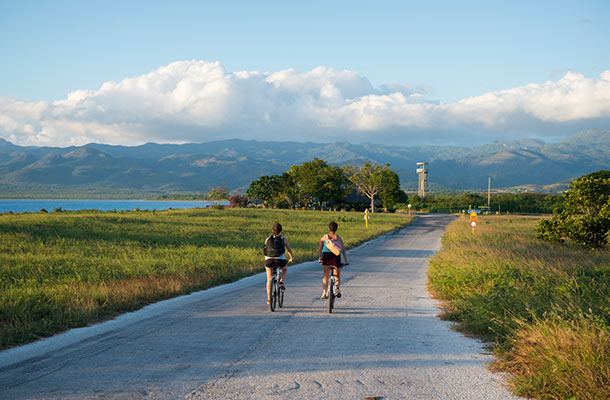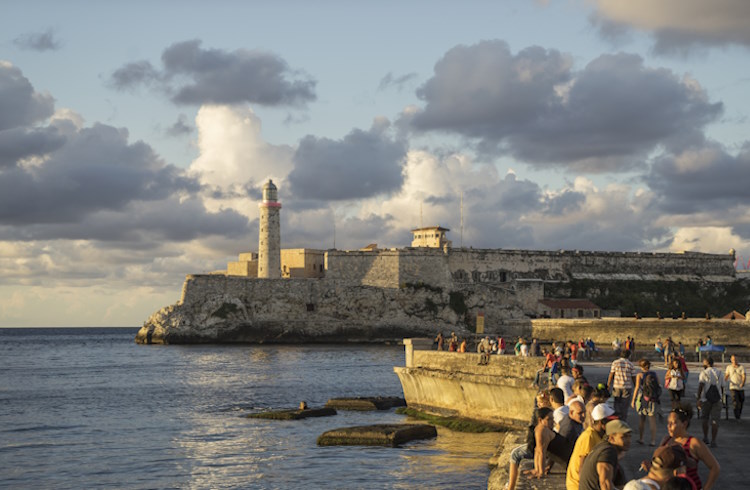Cuba’s best-preserved colonial town, Trinidad, is a charmer. Our local insider Annika takes us down pastel-colored houses, cobblestone streets, and a car-free historic core that’ll take you back to the 19th century.
 Photo © iStock/Nikada
Photo © iStock/Nikada
The streets surrounding Trinidad’s main square, Plaza Mayor, are lined with beautiful mansions from the heyday of the local sugar industry.
Several of these are now museums, highlighting various aspects of the town’s past.
Trinidad’s gorgeous natural surroundings also offer several worthwhile destinations for day trips.
1. Iglesia Parroquial de la Santísima Trinidad
Facing the Plaza Mayor, Trinidad’s main church was built over a 75-year period in the 19th century, and is known for its impressive neoclassical altar and fine acoustics.
Its greatest treasure is an 18th-century wooden statue of Christ, known as El Señor de la Vera Cruz.
2. Museo de Historia Municipal
Housed inside a magnificent 19th-century mansion, the Palacio Cantero, this museum contains an eclectic assortment of antique furniture, artwork, and decorative items, as well as exhibits on the sugar industry and other aspects of local history.
Climb the tower for great views of Trinidad and the Sierra del Escambray mountains.
3. Museo Romántico
Dating from 1740, with an upper floor added in 1808, the Palacio Brunet houses the Museo Romántico, which focuses on the period from the 1830s through the 1860s.
Objects on display include porcelain, glass, furniture, artwork, and other items owned by the wealthy Brunet family and other local elites.
4. Museo de Arquitectura Colonial
Flanking the Plaza Mayor, the Museum of Colonial Architecture occupies two connected blue buildings from the 18th century.
It highlights outstanding examples of domestic architecture from the colonial period, including walls, ceilings, carved doors, ironwork, and other elements.
5. Convento de San Francisco
A block off the Plaza Mayor, the Convent of Saint Francis, with its distinctive yellow bell tower from 1813, is Trinidad’s most recognizable landmark.
It’s now home to the Museo Nacional de la Lucha Contra Bandidos, with exhibits about the Castro regime’s struggle against counterrevolutionaries during the 1960s.
There are also spectacular views from the bell tower.
6. Casa de la Música
Atop the wide stone staircase beside the Iglesia Parroquial, is Trinidad’s most popular choice for a night out - an open-air venue where you can dance the night away under the stars or just sip a mojito and enjoy the entertainment.
There are live salsa shows and music nightly.
7. Playa Ancón
Playa Ancón is a lovely 4km stretch of white-sand beach located on the Peninsula Ancón, 12km south of Trinidad.
Cuba’s largest black coral reef is located just offshore at Cayo Blanco; day trips for snorkelling and diving are available.
8. Valle de los Ingenios
Most of Trinidad’s wealthiest colonial-era families made their fortunes in the sugar industry, centred in the nearby Valle de los Ingenios.
Stop at the Mirador de la Loma del Puerto for a panoramic view of the entire valley, dotted with the ruins of former sugar plantations.
One of the most interesting is the Manaca Iznaga estate, where you can visit the restored manor house, sample hand-pressed sugar cane juice, and climb a 45-metre bell tower built in 1816 for more stunning views.
9. Topes de Collantes National Park
The Sierra del Escambray mountain range forms a verdant backdrop for Trinidad.
The best place to explore it is at Topes de Collantes, a natural reserve with numerous forest trails, some of which lead to natural swimming holes and waterfalls.
Organized day trips are available from Trinidad, but you can also arrange your own transportation and pay a usage fee for trail access.
Heading to Cuba? Download our FREE Insider’s Guide!
Related articles
Simple and flexible travel insurance
You can buy at home or while traveling, and claim online from anywhere in the world. With 150+ adventure activities covered and 24/7 emergency assistance.
Get a quote

No Comments